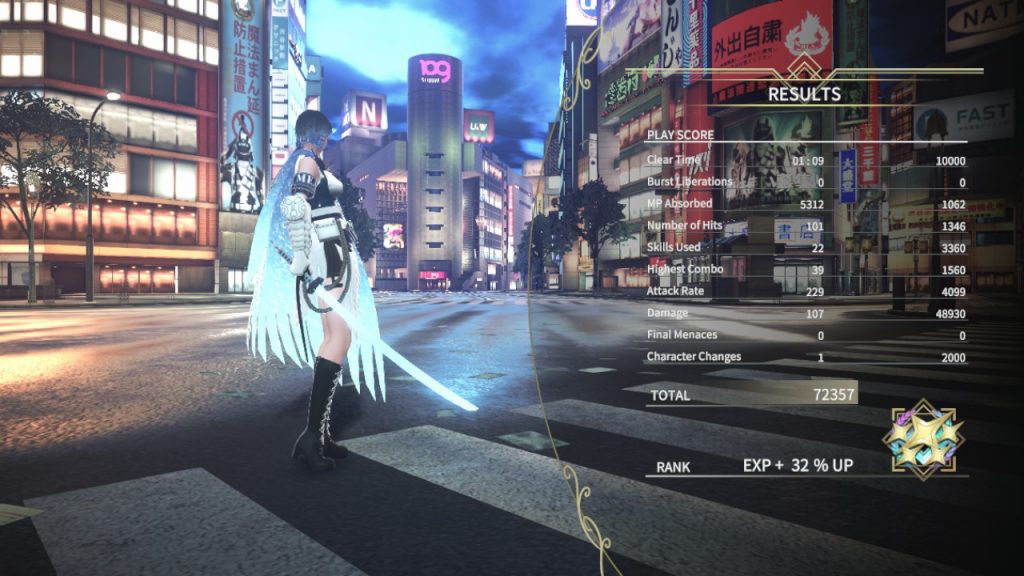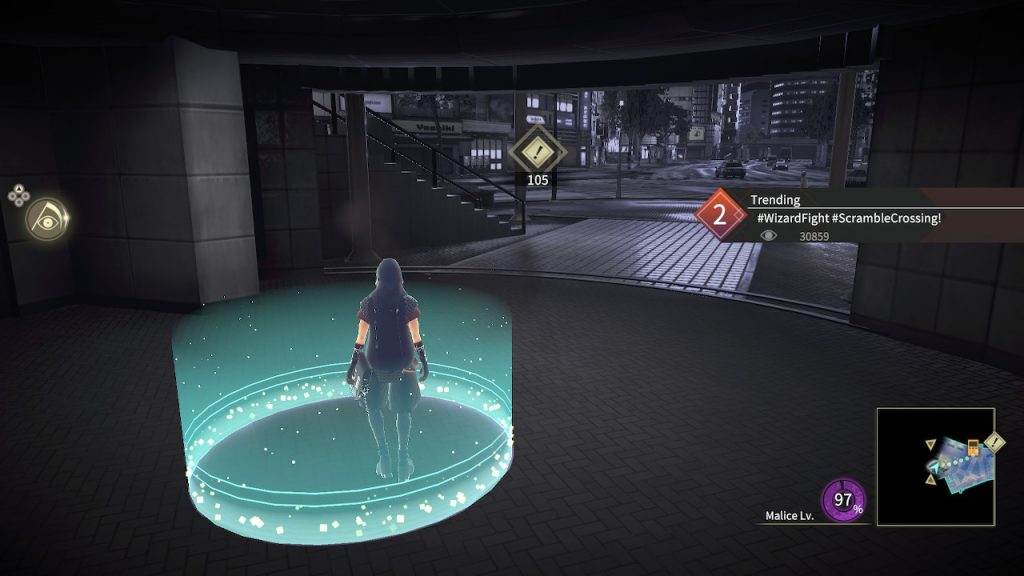Reynatis Switch Review
Summary: Reynatis is made up of a lot of fun ideas that are unfortunately very hit and miss in execution, running questionably poorly on its hardware target. There's fun to be had with the game, but not for this price tag, nor on the Switch.
3
Greetings, Sheeple of Shibuya!
18 years have passed since the unveiling of Final Fantasy Versus XIII, and yet despite its cut-down rebranding into Final Fantasy XV, its status as a “what could’ve been” game is still being felt today, between Kingdom Hearts 3’s Verum Rex minigame and FuRyu’s Square Enix-adjacent Reynatis.
Reynatis is developed by FuRyu Corporation, though its influence from Versus XIII, its crossover with NEO: The World Ends With You, and its writer and composer both known for their work across Final Fantasy and Kingdom Hearts makes it as Square Enix a game as it could possibly be without their name attached to it.
Set in a beautiful recreation of the Shibuya ward in Tokyo, the game follows a split-protagonist narrative, bouncing back and forth between three Magic Enforcement Administration (MEA) agents and three youths aligned with Shibuya Owl, a group of wizard vigilantes that also combat humans-turned-monsters addicted to an evil drug named Rubrum.
World-building aside, what I saw of the story felt largely inconsequential and unengaging. I struggle to recall anything notable. The main characters are also hit and miss; the MEA party are pretty bland people while the Owl group brings all the personality. Marin’s strong-headed personality feels out of alignment with the more colourful Owl members (notably the cutesy Moa), but the stronger chemistry and interactions compared to the MEA had me enjoying the Owl chapters a lot more. The two parties only started coming together just as I’d had enough of playing the game, at least on this platform.
Combat plays in real-time and takes advantage of the wizards’ two different states; Suppressed and Liberated. Suppressed wizards cannot attack, but they can retaliate, which recharges their MP faster. Liberation is their attack mode, which slowly drains MP (or faster if used on special attack skills), forcing the wizard back into Suppression when their MP runs out. This system is pretty interesting on paper as Suppressed parrying encourages you to switch between the two, but the running theme of the game is subpar execution, and that’s no different here. The game wants you to fight with patience, but most of the time you can just aggressively spam magic attacks, parry an enemy attack or two if your MP runs out, and repeat. There are bosses and mini-bosses that are exempt from this pattern, but not by much. The early-game mini-bosses were identical with increasing HP and damage output for most of my playtime, while actual, notable bosses used easily-breakable shields, allowing you to go to town with skill spam on them.
I’ve not had the chance to visit Shibuya myself (yet) but I recognise a lot of the city from other games and walking tour videos, and aside from the game’s performance (more on that later), the city looks great for Switch hardware. The game takes place entirely at night, so the lights are bright and plentiful. The other half of the game takes place in “Another”, an other-worldly realm of forests and deserts. A number of licensed names and products are used around the city, mostly in vending machine drinks that Yakuza/Like A Dragon players will recognise, though the attention to detail and licensing agreements is baffling when the Burger King on Center Street is entirely cosmetic, it’s not a store you can buy food items from.
Unfortunately, exploring Shibuya is only really enjoyable as the MEA agents. As the equivalent of police, the MEA can roam around liberated without issue, while the Owl members are illegal wizards. The moment you are liberated, or finish a fight, a countdown begins as reports of illegal wizardry begin to trend on social media. You can stop the countdown in specific areas, but at that point, your party has likely already built up a lot of stress. The most efficient way to avoid it is unfortunately to fast travel out of an area. Stress increases your damage at the cost of reduced defence, but when the stress gauge is full, you’re forced into liberated mode anyway. It’s a novel idea on paper, but triggering if you accidentally liberate yourself or get into a random encounter is a completely unnecessary punishment for simply trying to explore the map as the Shibuya Owl party.
I played the Switch version for review, and the game’s performance is a bit headache-inducing. It targets 30 frames per second, but suffers from consistent framerate and possibly frame-pacing issues that are tough on the eyes. The biggest drops are heavy areas of Shibuya, namely the one housing both the scramble crossing and the 109 building. There’s a 1v3 boss fight early in the game that takes place here, during which I was struggling to fight and react in time when all the pretty lighting dropped performance in handheld, akin to that of Perfect Dark’s hi-res mode. My limited experience playing the game docked was not much better. It’s really difficult to recommend the game on this platform when my experience with the demo ran at a far more responsive 60 frames per second even on the Steam Deck. If the game didn’t limit itself to the Switch, a game that looked as moody and atmospheric as the occasional pre-rendered cutscenes would look a lot more appealing.
The score was composed by the legendary Yoko Shimomura, known mostly for her work on the Kingdom Hearts series as well as Mario & Luigi and Xenoblade Chronicles. The score has an expected fantasy orchestra sound, which is fitting, though I’m personally not a fan, I enjoyed the synthy status menu and low piano-driven overworld suspense themes more. Nothing in the sound design really stood out to me as feeling out of place, though it’s nowhere near as satisfyingly punchy as Final Fantasy XV’s combat. Shibuya also sounds (and looks) surreally quiet compared to its real-life counterpart. Though explained in lore that a curfew is enforced, and while it doesn’t seem to stop many people, it feels very off to see the centre streets of bustling Shibuya so quiet.
Final Thoughts?
Baffling decisions and very unpolished mechanics aside, there is absolutely enjoyment to be had in Reynatis, but there’s no getting around how undercooked the game is outside of the sound department and just how at odds with itself the concepts and executions are. I highly recommend playing the demo; how you get on with it pretty nicely sums up whether you’ll really get into the full experience or not.















